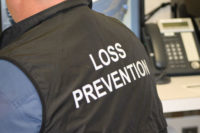Analytics Rings Up More Retail Sales








When loss prevention directors first brought security video into their stores, an initial aim was to deter shoplifters or, if that failed, use the recorded video to make the shoplifter agree to restitution, or to fight slip and falls.
Times started changing when security started realizing that much of the shrink was from sales associates, thanks in part to sources such as the National Retail Security Survey and the National Retail Federation (NRF). So some cameras turned to cash register stations, backrooms, loading docks and back doors. When the economy went south, some loss prevention executives and law enforcement officers believed that shoplifting would increase substantially as compared to internal theft, since there are fewer associates employed and those remaining not wanting to take a chance on losing their jobs.
The doomsday scenario seems not to have happened in retail crime and even more generally. As severe economic pressures slowly subside, retailers are noticing the same slight movement in merchandise losses and other types of criminal activity in their stores, according to NRF. There’s always an emerging threat or two: Organized retail crime seems to be today’s growing danger. And some retailers see increasing problems with counterfeit goods, ranging from pills to purses, sneaking onto shelves through the supply chain.
During these retail ups and downs, rights and lefts, security video itself has grown up with more cameras installed inside and out, a noticeable shift to IP, video integrated into other security and business systems and more intelligence at the edge and more analytics.
Ah, those analytics.
No doubt, the technology has gotten better, more accurate. But the mightiest surprise is how fast and in how many diverse ways security video analytics has become a key tool of merchandising executives, for those positioning stock on the store floor or on shelves, to help determine specials and promotions aimed at a certain demographic, to name just a few. Video analytics can tie to public view monitors hanging from a store ceiling or digital signage devices over which a retailer can even sell interactive advertising.
Attraction to Customized Services
In a recent survey of 100 retail security managers, research firm Frost & Sullivan found that managers are very much aware of the importance of creating solutions well-tailored to their specific operational and security requirements. Matia Grossi, research manager for physical security group and author of the survey, notes “The majority of retailers, when asked about unmet needs, points out that customized services, innovative technology and the integration of old and new security systems are all value-added services that retailers are starting to expect from their system integrators.” Among trends identified: the ability to monitor and analyze from one central location, says Grossi.
“More than 70 percent of those we interviewed declared an awareness of the utility of video surveillance for applications beyond pure security, such as customer counting and demographic and queue monitoring, with varying percentages for each application. Roughly 80 percent of those aware of this possibility suggested they are also looking actively into the potential deployment of video analytics,” Grossi adds. While the research points out that no analytics works perfectly, there is growing interest in collecting more demographics that differentiate among a man or woman, race, and age. In these applications, since they are not security-centric, accuracy is less of a problem. Getting more information automatically can prove helpful on the merchandise and marketing sides.
This evolution of video analytics, cutting across the entire business, mirrors the evolution of the loss prevention profession itself. And it is an example to follow for enterprise security leaders in other types of business.
Tim Fisher, director, asset protection and safety for Best Buy, points out that “I have watched the loss prevention industry evolve throughout the course of my career. When I first started in the profession, [it] barely consisted of more than the corporate cop. We were focused very specifically on enforcing company rules and catching violators. For many of us, our worth was measured by apprehension statistics.
Loss Prevention Focus Sharpens
“In my early days, there wasn’t even much focus or discussion on actual shrink rates,” Fisher adds. “Somewhere in the late 1980s and early 1990s, as loss prevention-related technology evolved and became affordable and more user-friendly, it seemed as though everyone rushed to implement technology solutions to shrink.”
These days, at giant chains such as Best Buy and even at small boutique stores, analytics has help break through the silos and, as a corollary, brought loss prevention executives even closer to their businesses.
It has impacted Fisher and his operation, for example.
It started as an experiment a couple of years ago when Best Buy brought in technology from Verint Systems on a 45-camera platform in one of its 45,000 square foot stores to help analyze and optimize customer experiences associated with product placement and promotions.
Mirroring Fisher’s experience over the years, Jim Shepherd, retail national account manager at Protection One, says that loss prevention has taken on a proactive role both for security and for the business side. Integration overall is another trend with alarms, security video and access control among the elements, he says. And it’s economy driven, he notes. It’s ROI. Analytics can help with under-rings and sweethearting. And more often today, the marketing folks are networked into the video side, he says. Some analytics such as facial recognition are still not there, he says.
Concerning integration, Bill Taylor, president of Panasonic System Networks Company of America notes that video and data can be integrated with other applications such as retail systems, human resources, process management and access control systems. Smarter cameras on the edge of the network can identify objects left behind (for security) or help track customer traffic patterns, crowd counting, etc., for non-security applications. Face recognition can certainly serve a security function, but it could also be used to identify a retail store’s best customers, for example, to alert employees to provide VIP treatment.
Such new-age tools go beyond security to help retailers understand shopper behaviors and trends by providing insight into in-store promotions and advertising campaigns, identifying traffic flow patterns and measuring dwell-time, and helping to ensure proper product placement on shelves and aisles. By using a video analytics tool, retailers can extract and search customer behaviors through stored video. In addition, the analysis can be used along with point-of-purchase (POS) data to further understand buying patterns.
At the time of the initial startup, Best Buy’s Fisher said, “Within hours of the installation, store management was working actively with the solution and modifying product placement based on the information.”
Of course, analytics is not the only tool in security’s bag.
Enlarging Analytics Abilities
Some simple kinds of analytics such as motion detection have been around for many years. But according to Brendan Daly of Eye P Video, there are advantages with network-based video and with digital video storage and retrieval: analytics works well inside and in fixed environments. Daly’s bottom line is that digital turns video into data which a retailer can mine for a variety of security and business reasons.
There are indications that loss prevention executives are close to pulling the IP video trigger. At NRF’s Big Show early in January, a Surveillance Survey Report, conducted by the Loss Prevention Research Council (LPRC) and sponsored by Axis Communications, found that 87 percent of retail companies who currently use analog technology for surveillance are now considering migration strategies toward network video.
Almost all of the retailers surveyed (98 percent) claimed to currently use video surveillance in their stores, yet just 25 percent stated that they have already made the move to an all IP-based surveillance system. There is also a push to megapixel and high definition cameras with “at the edge” analytics processing and storage, which demands networking. Such advanced installations can offer intelligence ranging from simple people counting to more sophisticated applications.
Simple people counting can, however, be useful to a number of businesses. Gaming establishments may employ this video analytic in conjunction with state regulation to determine taxes based on patron visits. More typical retail operations often embed people counting into their video upgrades and analog-to-digital migrations. Intelligent tracking is another feature of video analytics. It can track how customers look at items or if they just passing through. It can tell you if they are touching items on the shelves or, for security needs, if the customer is taking too many items.
For instance, a number of shopping centers, owned and managed by Canada’s Ivanhoe Cambridge, are deploying new IP video surveillance systems. Mapleview Shopping Centre, located in Burlington, Ontario, is the latest to undergo the transformation, following a successful installation at the company’s Mayfair Mall in Victoria, British Columbia. Santo Polito, property services manager for Ivanhoe Cambridge, explains that shopping center management can access footage to help analyze events, promotions and footfall trends. Real-time analytics can also be used for some innovative applications. Mapleview is currently trialing the directional virtual tripwire analytics function built into the video transmitter modules to provide the shopping center with a count of customers entering two of the building’s entrances. This provides better accuracy than so-called “Eye-Beam” equipment installed on the doorways, which unfortunately can double-count people as they enter and leave the premises.
Business Intelligence Adds Value
Video can be a theft deterrent, contends Dr. Alan Lipton, chief technology officer, Lenel/UTC Fire & Security, but it becomes even more valuable when you add analytics into the business processes and business intelligence needs, he says. For security alone, loss prevention seeking higher level technology must overcome pricing hurdles, especially when many retail operations run on thin profit margins. But, according to Dr. Lipton, when you add analytics to the business intelligence side, such as buying patterns or POS, the business side often can share the buy with security. Analytics continues to improve and itself diversify into various approaches. Maybe, one day, retail will use even more sophisticated ways for video to alert to potential theft in real-time. For example, he suggests that infrared (thermal) video can increase the accuracy of facial recognition; and algorithms, at the heart of analytics, may one day alert to change in blood flow in the face of a potential shoplifter, excited about stealing goods.
Beyond security, says Russ Tate of ADT Security Services, security video and analytics is all about the customer experience. One interesting twist is the emergence of enhanced public view monitors (EPVM) that can sit on a shelf next to or near high ticket or high risk goods. The monitors can be at eye level and can come with a built in video recorder. In addition to alerting to suspicious actions, “they can drive addition revenue. Just stick in a flash player and at certain intervals, it provides audio and video promotion, which the product maker or distributor would compensate the retailer similar to prime shelf position or other store displays.
In addition to the allure of digital video, for some retailers analytics has been so attractive that new types of businesses have started up to take security video from a client store, analyze it and provide back or give access to reports that can be easily customized by specific security and business needs. The data often go way beyond simple people counting.
POS Working With Analytics
One of these firms, Agilence, specializes in POS video auditing with a mixture of software and analysis services that enables retailers to quickly identify losses caused by operational errors, promotion execution, systemic errors, and associate fraud. While the firm works with loss prevention, it markets clearly to a retailer’s COO, CFO and CIO by appealing to their need for return on investment beyond security. Rite Aid, the large drugstore chain, uses the professional auditing services at nearly 600 of its stores. “The software nicely complements our existing loss prevention initiatives,” says Robert Oberosler, Rite Aid group vice president.
Another firm, Retel Technologies, blends machine vision and cloud computing with a trained human auditor workforce. Video is usually captured on-site, encoded and transmitted to the firm’s secure servers for proactive auditing, which determines what video to send into human auditing. The service also creates video auditing tasks to distribute to the auditing workforce and monitors the workforce to accept or reject auditors’ work based on quality and accuracy.
|
Face It: Smart Cameras Work the Infrastructure Better There are current and emerging “gee-wiz” security video and analytics applications. Where the technology resides can make a difference. Video cameras are offering more on-board intelligence, which enables additional and more effective smart functions to happen at the edge of the network, says Bill Taylor of Panasonic System Networks Company of America. Smarter cameras help minimize the system’s computational load and the amount of data that travels across the network, which makes for better use of network infrastructure, he says. Some of the more interesting technologies that have applications even beyond security include face matching, sophisticated video motion detection, objects left behind and virtual tripwires in video images. Smart video-based face detection and matching can identify known shoplifters as they enter a store, even if there are several people in the frame, Taylor notes. Used together with cameras providing on-board face detection, network video recorders with embedded face matching capability eliminate the use and added expense of external software. |
Looking for a reprint of this article?
From high-res PDFs to custom plaques, order your copy today!













